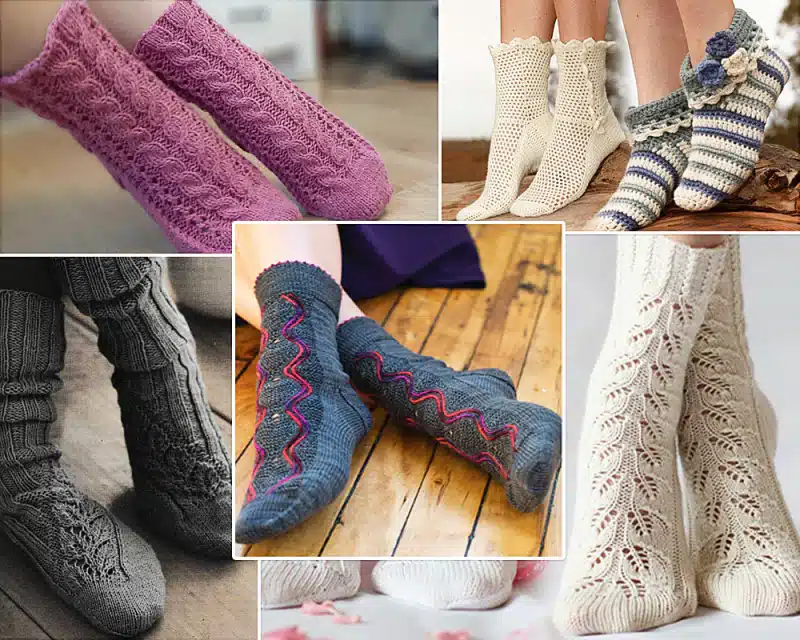Knitted socks in autumn and winter perfectly warm the legs, and if the threads are soft, they also give comfort. Usually, they don’t buy yarn specifically for socks. For your relatives and friends, you can knit good products from the remnants of threads, which a woman often knits a lot.
But young craftswomen do not like to save money, let alone knit from leftovers. Especially if the socks are knitted to order. Therefore, sometimes they still buy yarn.
Methods for calculating the amount of yarn for socks The calculation of threads for socks is no different from the calculation for a sweater, blanket and other products. And the volume of threads also depends on the density of knitting, the type of model, leg sizes, patterns. Therefore, for socks, there are also approximate calculations that are convenient to apply in practice. You can calculate the volume of yarn for hand knitting by the length of the foot and the size of the shoe. The length of the foot can be measured when this same foot is nearby. And if a person is far away, you can simply find out his shoe size. Warm winter knitted socks should be one size larger. Standard toe height above the ankle by 4-5 centimeters. The average sock does not have any complex and voluminous patterns. If your model fits these descriptions, then you can focus on the diagrams given in our article.
<h3>Calculation by knitting density</h3>
In the first scheme, the calculation is based on knitting density and metric area. This is a method for real pros. Because they know that weight is nothing and footage is everything.
he density of knitting looks like a pattern that you need to make from specific threads with selected knitting needles or crochet.

After counting how many loops fit in 10 centimeters, the sample can be left alone and go to the table. Let’s say you have 28 stitches per 10 cm and a 26-meter foot. So, you need 397 meters of Turkish yarn. This is if the sock is normal. What if it’s long? And if there are a couple of chic arans? And if the heel and toe are sealed with a second layer of knitting? Feel free to add another 50 grams. And that’s all a hundred! But for summer lace cotton socks, we will not add, but subtract. Because openwork knitting saves up to 10% of yarn.
<h3>Foot size calculation</h3>
The second table was created for lazy people. No swatches are required.
We look at the threads, look at the size of the legs – and we get the weight. But here, too, you need to make an increase in the height of the toe, patterns and seals against erasing the heels.
For example, we knit funny cotton socks for the home from Lavita yarn from the Baby Cotton series for a child. A skein of 50 grams has a footage of 165 meters. This will be the average thread thickness. Let’s say the child’s foot size is 35.
So, you need 50-100 grams. Nothing can be done, you have to take 100 grams of quality Lavita yarn. Almost like adult socks. And then look: make knee socks out of them or save the remnants of yarn.
The knitting tradition has developed a general rule: for children’s socks you need 50 grams of yarn, for women – 100 grams, for men – 150 grams. If the socks are high, then add 100 grams. If these are no longer socks, but knee-highs, then they will need 300 grams of yarn of medium thickness.

